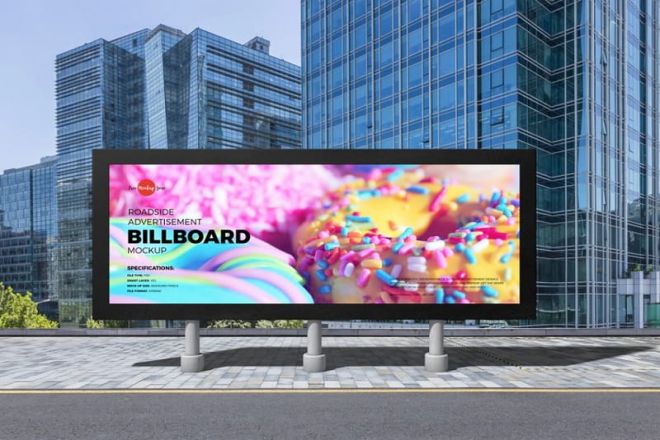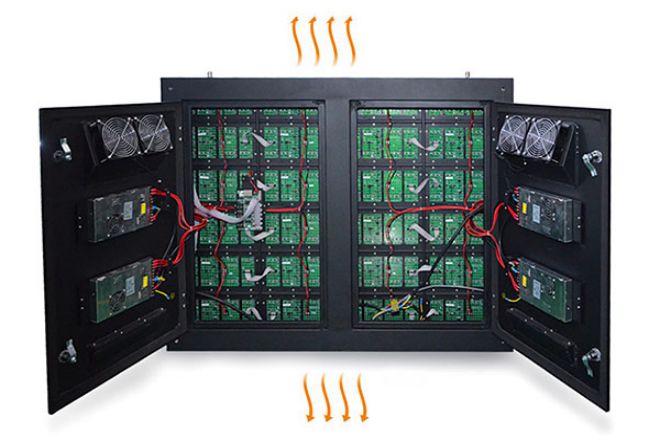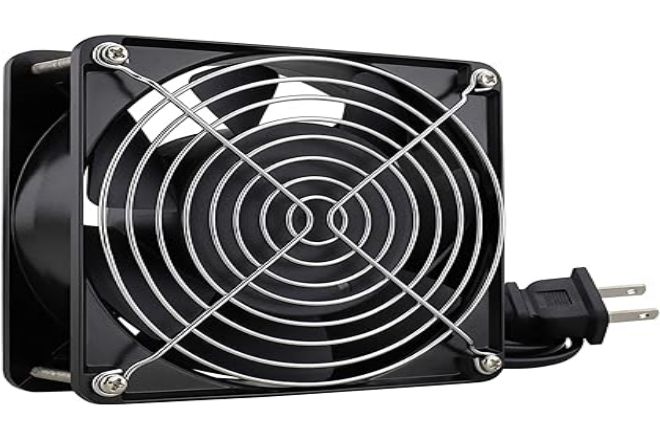소개

옥외 LED 디스플레이, as an indispensable element in modern life, have penetrated into every aspect of our lives. Whether in commercial advertising, public information releases, or live broadcasts of sports events, outdoor LED displays play an important role.
However, with the continuous advancement of display technology, its heat dissipation problem has become increasingly prominent.
1. The importance of heat dissipation design for outdoor LED displays
During the operation of outdoor LED displays with high brightness and high frequency, a large amount of heat is generated due to the conversion of a large amount of electrical energy into light energy.
If this heat cannot be effectively dissipated, it will cause the temperature inside the display to rise, thus affecting the luminous efficiency and service life of the LED lamp beads.
In severe cases, the display may even be damaged. Therefore, a good heat dissipation design is one of the key factors in ensuring the stable operation of outdoor LED displays.
2 . What are the challenges in heat dissipation of outdoor LED displays?

Effect of ambient temperature and humidity: Temperature and humidity changes in the outdoor environment may cause temperature fluctuations inside the display, thus affecting the heat dissipation effect.
Challenges of display size and density: As the display size and pixel density increase, the amount of heat generated per unit area also increases accordingly, placing higher requirements on heat dissipation design.
Long-term operation and heat accumulation problems: When the LED display screen works for a long time, heat accumulation may cause the temperature to rise, affecting the display effect and lifespan.
Maintenance and lifespan issues: Poor heat dissipation may cause premature aging of the display and increase maintenance costs.
3. What are the differences in the heat dissipation methods of different outdoor LED displays?
There are mainly the following different methods of heat dissipation:
- Display size:
Due to the large area of large outdoor LED displays, the amount of heat generated per unit area is relatively high, so a more efficient heat dissipation method is required. For example, large LED displays usually use liquid cooling systems or add cooling fans to improve heat dissipation efficiency.
- Installation method and location:
Different installation methods and locations will also affect the heat dissipation effect. For example, an LED display screen installed on the wall can be used for heat dissipation, while a column-mounted LED display screen needs to choose a heat dissipation method according to the specific situation.
- Usage environment:
The usage environment also has a great impact on heat dissipation methods. For example, in high-temperature and high-humidity environments, you need to choose a heat dissipation method that is more resistant to high temperatures and moisture-proof.
- Heat dissipation requirements:
Different LED displays have different heat dissipation requirements. For example, LED displays that run for a long time need to pay more attention to heat dissipation design to ensure the stability and life of the display.
4. Devices that help dissipate heat

Heat sink: Metal heat sinks can quickly conduct heat to a larger area, thereby facilitating heat dissipation.
Cooling fan: A rapidly rotating fan that can effectively take away heat and dissipate it into the air.
Thermal grease: a material with high thermal conductivity that can effectively conduct the heat generated by LED lamp beads to the heat sink.
5. So, how do we improve the heat dissipation of outdoor LED displays?

- Optimize heat dissipation design:
A reasonable design layout can effectively improve heat dissipation efficiency. For example, increase heat dissipation channels, optimize heat sink design, etc.
Use materials with high thermal conductivity, such as thermal grease, metal heat sinks, etc., to conduct heat away better.
Regular maintenance and cleaning:
Regularly clean the dust and debris on the display to ensure that the heat dissipation channel is unobstructed.
Intelligent heat dissipation management:
Using a temperature sensor and control system, it can monitor and control the temperature of the display screen in real-time to prevent overheating.
The use of environmental control equipment, such as air conditioners, exhaust fans, etc., can effectively reduce the external ambient temperature and improve heat dissipation efficiency.
Proper configuration of the power supply:
The power supply is one of the main heat sources in the LED display. Proper configuration of the power supply can reduce the heat generated.
Consider using heat pipe technology:
Heat pipes are highly efficient heat transfer elements that can transfer large amounts of heat to other areas in a short period of time.
Control LED brightness:
Appropriately reducing LED brightness without affecting viewing effects can reduce heat generation.
Add shading facilities:
Adding shading facilities above or to the sides of the display can reduce heat gain caused by direct sunlight.
- Adopt an intelligent temperature control system:
The intelligent temperature control system can automatically adjust the temperature inside the display screen according to the ambient temperature to maintain stable performance.
결론
The heat dissipation problem of outdoor LED displays is a comprehensive issue that requires us to consider and solve it from multiple aspects. Only by solving the heat dissipation problem can the stable operation of the outdoor LED display be ensured and its service life and display effect improved .
Finally, if you are interested in LED display screens, you are welcome to 문의하기 at any time!
